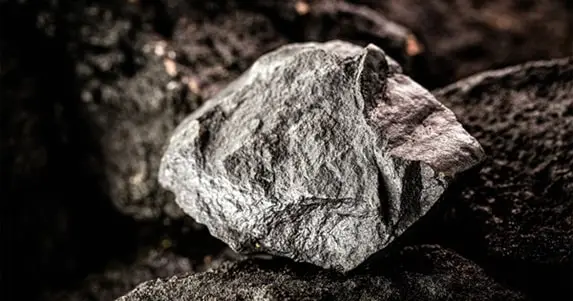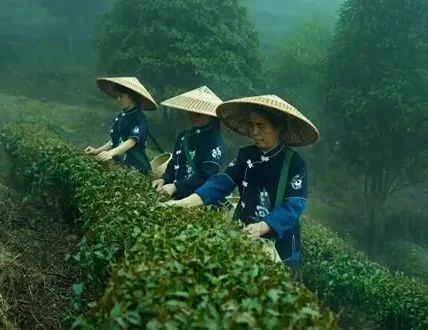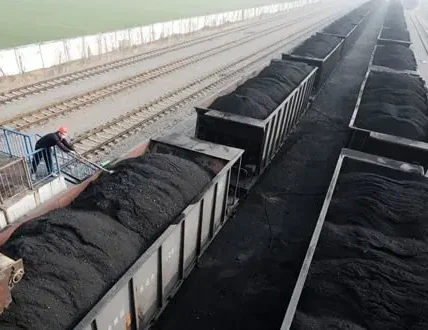The most important raw material for the world’s steel industry, iron ore, shapes the economic balance of nations. As we step into 2024, iron ore production is a critical benchmark to measure industrial prowess in any given country. In this article, we chronicle the top 10 largest iron ore producers in the world with an insight into what they bring to the global market as well as what makes them tick.
Countries With Highest Iron Ore Production
1. Australia (880 million MT)
Australia is the world’s largest iron ore producer with 880 million metric tons in 2024. Our infrastructure, technology, and export links make Australia the leader in iron ore production. BHP is essential to Australia’s massive iron ore output. Australia’s iron ore producers include BHP, Rio Tinto, and Fortescue Metals Group. Most of Western Australia’s iron ore comes from the Pilbara. Although miners in the Wheatbelt, Kimberley, and Mid-West contribute to Western Australia’s output, the Pilbara is the core. Rio Tinto and BHP produced 90% of the state’s iron ore in 2022–2023. Fortescue Metals Group was third. Rio Tinto owns twelve Pilbara iron ore mines—two with Fortescue and seven with BHP. The Pilbara receives iron ore readily from Port Hedland, Dampier, and Cape Lambert. BHP, Fortescue Metals Group, and Atlas Iron utilize Port Hedland; Rio Tinto uses the latter two.
2. Brazil (410 million MT)
Brazilian iron ore output ranks second globally with 410 million metric tons, making it important. The nation’s mining sector has flourished due to plentiful iron ore and excellent geology. Brazil is becoming a global iron ore powerhouse owing to increased production. In 2023, Brazil produced 410 million metric tons of iron ore and 260 million of iron. Brazil gets 98% of its iron ore from Para and Minas Gerais. Massive iron ore mining centers strengthen Brazil’s global standing. Brazil should improve its iron ore market position in 2023. David Cachot, Wood Mackenzie research director for steel and raw materials, expects Brazil and India to dominate global supply while Australian exports stay steady. Brazil is committed to the iron ore sector and meeting global steel industry demands.
3. China (380 million MT)
China uses the most steel and generates a lot of iron ore. China produced 380 million metric tons of iron ore and 240 million metric tons of iron in 2022, ranking third. This production indicates China’s commitment to a robust iron ore sector to meet steel industry demand. In 2023, economists estimate iron ore prices to drop to $90-100 per ton. Lower Chinese steelmaker demand, largely from construction sector circumstances, affects this projection. To match this prediction, Goldman Sachs anticipates iron ore prices to fall 12% to $90 per ton in the second half of 2023.
4. India (290 million MT)
India produces fourth-most iron ore, indicating a rising steel industry. India produced 290 million metric tons of iron ore in 2022, exhibiting mining sector growth. Large resources and a dedication to modernize mining have put the nation at the top of the iron ore industry. India produced 290 million metric tones of iron ore and 180 million metric tons of iron in 2022, ranking fourth. As production rose from 273 million metric tons last year, India is dedicated to retaining and expanding its iron ore market share. In the 2023–2024 fiscal year, Odisha, India’s largest iron ore producer, is predicted to produce 155–160 million tons, up from 140 million tons. Karnataka’s iron ore production is predicted to expand from 38 million tons in 2022–2023 to 40–45 million tons this fiscal year.
Also See: Largest Producer Of Natural Gas In The World
5. Russia (93 million MT)
Russia takes the first place when it comes to iron ore production. Almost 93 million metric tons of iron ore was produced by the country in the year 2022. In the subsequent year also 63 million metric tons of iron ore was excavated. In spite of the fact that the production decreased in later years, Russia still offers a substantial level of production. Due to the economic backlash against Russia, after 2022, the production issue intensified. Previously 36% of iron ore used to be sent to Ukrain. But under the shadow of war, this situation was not simple anymore. Yet, Russia manages to hold the top position.
6. Ukraine (76 million MT)
Ukraine is an absolute hub for iron ore production. In the year 2022 the total production of iron ore is 76 million metric tons. It is the six highest producer of iron ore at the moment. Ukraine has a strategic relationship with the all renowned companies. Therefore, the country has been able to share their production with the world. When it comes to proper filling up of the world’s iron ore needs, then Ukrain steps up as a very important contributor. In 2022, Ukraine was the sixth country to produce 76 million metric tons and 47 million tons of iron. Iron makes up to about 10% of Ukraine’s GDP, hence its high importance in the economic balance sheet.
7. South Africa (75.9million MT)
South Africa in 2022 produced 75.9 million metric tons of iron ore, seventh position in the world in production. Iron ore mining has associated the South Africa economy for its growth. It plays as a global player on iron ores with diversified mining activity and sustainable practices. In 2022, South Africa shipped 75.9 million metric tons of usable iron ore and 48 million tons of iron from the world’s seventh-largest iron producer. Kumba drives Africa’s iron ore production. The dominant mine of Kumba is Sishen, by which Anglo American holds 69.7% in it.
8. Iran (75 million MT)
Iran produced 75 million metric tons of iron ore, sixth globally, proving its mining sector growth. Massive iron ore resources and government mining incentives have led to this growth. Iran exports a lot of iron ore, demonstrating its global significance. The Iranian government needs 55 million metric tons of steel by 2025 or 2026. Iron ore production is expected to reach 160 million metric tons, indicating a solid development strategy. Iran levied 25% on iron ore exports in September 2019 to favor domestic steelmakers. This strategic move indicates Iran’s dedication to steel self-sufficiency.
9. Kazakhstan (66 million MT)
Emerging mining powerhouse Kazakhstan produces 66 million metric tons of iron ore, ninth globally. Kazakhstan is a worldwide participant due to its iron ore deposits, infrastructure, and technology. azakhstan produced 14 million metric tons of iron and 66 million metric masses of usable iron ore in 2022, ranking tenth. Useable iron ore production rose from 64.1 million in 2022 to a record 66 million, while iron content rose from 13.1 million to 14 million. Kazakhstan’s five iron ore mines include one ArcelorMittal and four Eurasian Resources Group. Before the Russian invasion of Ukraine, Magnitogorsk Iron and Steel got iron ore from Northern Kazakhstan’s Sokolov-Sarybai Mining Production Association (SMPA). After the invasion, SMPA discontinued shipments to Magnitogorsk.
10. Canada (58 million MT)
Canada produces 58 million metric tons of iron ore, eighth worldwide. Canada’s mining sector has contributed iron ore to the globe, although not as much as others. Sustainable mining and technological innovation ensure the nation’s worldwide standing. Canada, the world’s tenth-largest iron producer, generated 58 million metric tons of usable iron ore and 35 million tons of iron in 2022. This is higher from 2021’s 57.5 million metric tons of usable iron ore and 34.5 million of iron content. Nunavut Iron Ore Acquisition owns the ArcelorMittal Mary River Project surface mine. The mine is planned to produce 4.5 million tonnes of iron ore between 2022 and 2043, retaining Canada’s global lead.
Conclusion
Iron ore global market is dynamic with the prevailing with its characteristics. And as we move through 2024 this group of the top 10 largest producers of iron ore continue to shape the industry ensuring of supply of this much sought after essential raw material for the world’s steel-making sector. From mining powerhouses such as Australia and Brazil, to emerging players in the form of Kazakhstan and Canada, each country within this list has a key role to play in meeting the growing demand of the world for iron ore.
FAQs
Q1. Which countries produce the most iron ore?
Ans: The leading iron ore-producing countries typically include Australia, Brazil, China, India and Russia. These countries possess significant iron ore reserves and have well-established mining industries.
Q2. What is the process of extracting iron ore?
Ans: Iron ore is typically extracted through open-pit mining or underground mining methods, depending on the depth and quality of the ore body. Once extracted, the ore is crushed and refined to remove impurities, resulting in a concentrated form of iron oxide.
Q3. What are the main uses of iron ore?
Ans: The primary use of iron ore is in the production of iron and steel. Iron ore is smelted in blast furnaces to produce pig iron, which is then further refined to produce steel. Steel is used in various industries, including construction, automotive manufacturing, and machinery production.
Q4. How much iron ore is produced globally each year?
Ans: Global iron ore production varies from year to year depending on factors such as demand, market conditions, and resource availability. In recent years, annual global iron ore production has been in the range of 2 to 3 billion metric tons.
Q5. What factors influence iron ore prices?
Ans: Iron ore prices are influenced by factors such as global demand for steel, economic growth in major consuming countries, production levels, supply disruptions (e.g., due to weather events or labor strikes), and changes in government policies related to mining and trade.
Q6. What environmental concerns are associated with iron ore mining?
Ans: Iron ore mining can have significant environmental impacts, including habitat destruction, soil erosion, water pollution, and greenhouse gas emissions. Efforts are being made by the mining industry to minimize these impacts through measures such as reclamation and environmental mitigation.

Brandon is the cheif editor and writer at WorldUnfolds.com. With a passion for storytelling and a keen editorial eye, he crafts engaging content that captivates and enlightens readers worldwide.















